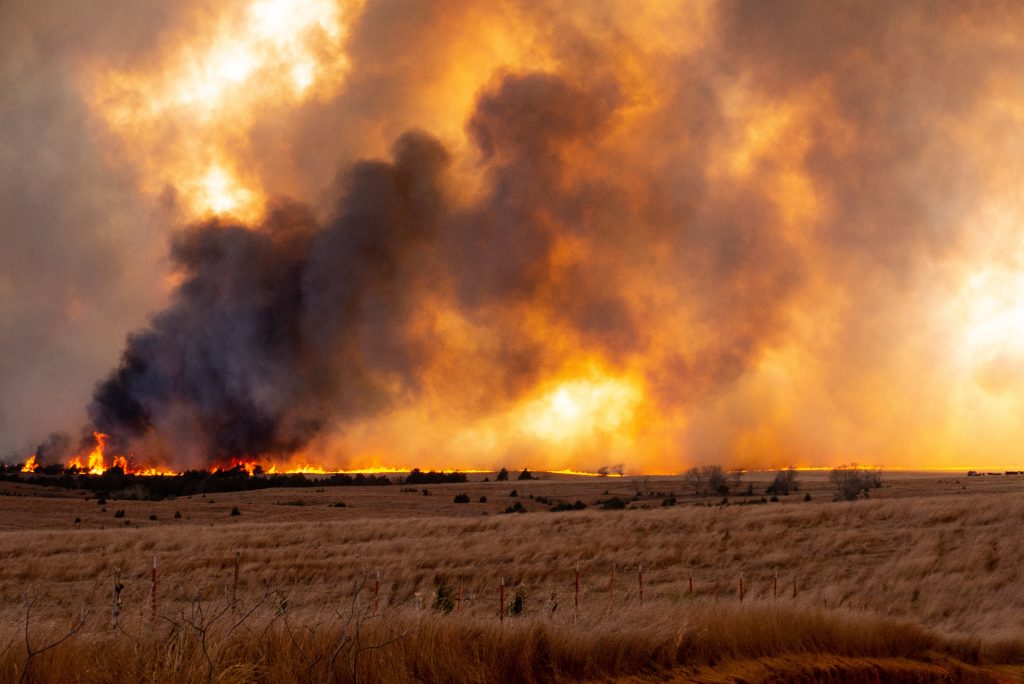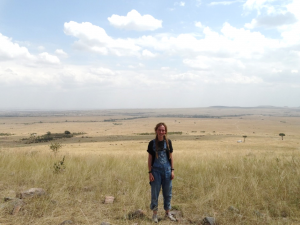By Abigail Croker, a PhD student in the Science and Solutions for a Changing Planet DTP and the second Transition to Zero Pollution PhD cohort.
Around 86% of all global fire events occur in savannas. These fire events contribute to 10% of total annual carbon emissions. African savannas make up most (71%) of the total contribution of savannas to carbon emissions. Humans and savannas have co-existed, and co-evolved, for the last 400,000 years. However, long-term patterns in fire events – known as fire regimes – are changing due to human activity. Current fire regimes in East African savannas, and the new wildfire patterns that are emerging because of them, are complicated by four challenges: 1) the social construction of savanna ecosystems, 2) recent colonial history and persisting neocolonial influence, 3) population growth and urban expansion, and 4) the global environmental agenda.
In this blog I will outline these four challenges in the context of East African savannas and explain how my research contributes to the sustainable management of savanna fires.
A ‘Natural’ Narrative?
Evidence reveals the habitual use of fire by early humans across African savannas dating back to ~400,000 years ago (Bird and Cali, 1998). Fires have an ancient geological history on earth and have influenced global biogeochemical cycles and evolution independent of humans for millennia. However, elemental carbon studies have inferred that fire incidences in sub-Saharan Africa were low until this time, suggesting that humans have exercised significant control over savanna structure and fire regimes for centuries (Bird and Cali, 1998; Bowman et al. 2011). The co-evolution of humans and savannas makes it difficult, and perhaps impossible, to distinguish between natural and anthropogenic fire regimes (Reid, 2012; Laris and Jacobs, 2021).
Fire scientists have recognised a global shift in fire dynamics, a concept termed a ‘pyric transition’, whereby humans have fundamentally altered the two main conditions fires depend upon: geophysical dynamics, such as temperature and relative humidity, and vegetation (Bowman et al. 2013). Fires require living biomass to exist in the landscape (Sa et al. 2011) and human activity causes a departure from ‘natural’ background levels of fire activity by actively manipulating vegetation and soil, such as through agricultural practices, land use change (e.g., deforestation), ignition patterns (e.g., seasonality), and land management- and fire-related policies (e.g., active suppression).
In recent history, human-driven climate change and the transformation of ecosystems globally have resulted in a shift in human influence over the geophysical, as well as the vegetational conditions wildfires synthesise (Bowman et al. 2011), altering conditions above recorded natural variability levels (Jones et al. 2020). Jolly et al. (2015) show that fire seasons, defined by fire-prone weather conditions, lengthened across 25.3% of Earth’s vegetated surface between 1979 and 2013. This resulted in an 18.7% mean increase in the global fire season duration, with some regions, such as East Africa experiencing wildfire seasons more than a month longer than they were in the 1980s. This trend is predicted to accelerate due to this recorded extension having caused an 108.1% increase in burnable vegetated area. The interrelated environmental, social, economic, political, legal, and institutional systems that contextualise and precipitate current and future projected wildfires are, thus, inherently distinct from geologic past (Pyne, 2020).
Western-centric Fire Suppression Policy
Across Eastern Africa, this pyric transition, can be directly attributed to European colonization which led to adoption of a standardised suppression approach to eradicate fire from the landscape. In the late-nineteenth and early-twentieth century, western conservationists initiated a global movement towards the preservation of wilderness, resulting in the eviction of local and indigenous groups across vast areas of protected savanna ecosystems and a ban on their traditional fire practices. Globally, this has reinforced the wildfire paradox, whereby the exclusion of fire from the landscape has induced larger and more intense fires due to excess fuel accumulation and moisture availability. The intensification of fire conditions has not, however, increased the frequency and intensity of fires; many East African savannas that ecologically depend on fire now experience no fire at all.
Moura et al. (2019) identified three main legacies of colonial fire management on East African savannas. Firstly, widespread tensions and conflicts between governments, authorities, and local and indigenous communities, often resulting in the extradition of the latter and repudiation of their rights. This has been widely recognised as a leading factor in unsustainable and exploitative natural resource management. Secondly, the accumulation of ground fuels and an increase in late dry season (LDS) fires that burn extensively and intensively. LDS fires are often associated with extreme wildfire events (EWEs) that adversely impact both human and natural biotic and abiotic systems, including short- and long-term increases in GHG emissions. And thirdly, accelerating ecosystem degradation due to woody and unpalatable shrub encroachment, causing a decline in vegetation and soil health, widespread biodiversity loss (e.g., affecting the life history traits of species that inhabit East African savannas, such as migratory herds that follow distinct rainfall and nutritional gradients), and therefore, increased inter- and intra-species competition for resources (Archibald, 2016).
My research

My research explores the opportunities for equitable institutions, governance, and policy for addressing wildfire challenges across post-colonial East African savanna ecosystems – where all stakeholders and rights holders are recognised, equably represented, included in the decision-making process, and have access to the opportunities and benefits of implemented measures. Fires have a complex socio-ecological history in East African savannas, where wildfire challenges witnessed today reveal underlying environmental, social, economic, and political conflicts and struggles. To understand how different fire management practices and policies affect the delivery of ecosystem (dis)services across the Greater Serengeti-Mara Ecosystem (Kenya and Tanzania), I am going to create a socio-ecological systems model where each practice and/or policy is modelled under projected future climate-socioeconomic scenarios. Due to the diversity of voices and vested interests existing across this landscape, this model will allow us to explore how current and proposed fire management practices affect socio-ecological systems at multiple stakeholder and spatio-temporal scales. In addition to this, a series of workshops will be carried out with local stakeholders and rights holders to investigate local attitudes, empirical realities, and constructions of fire, and scope of future policy and management.